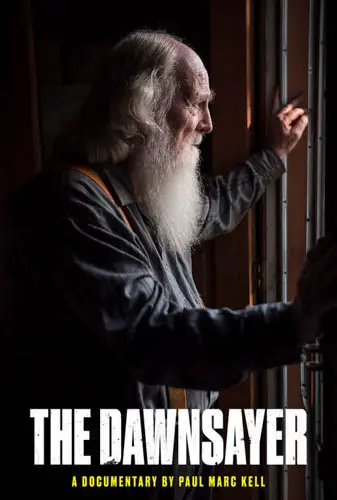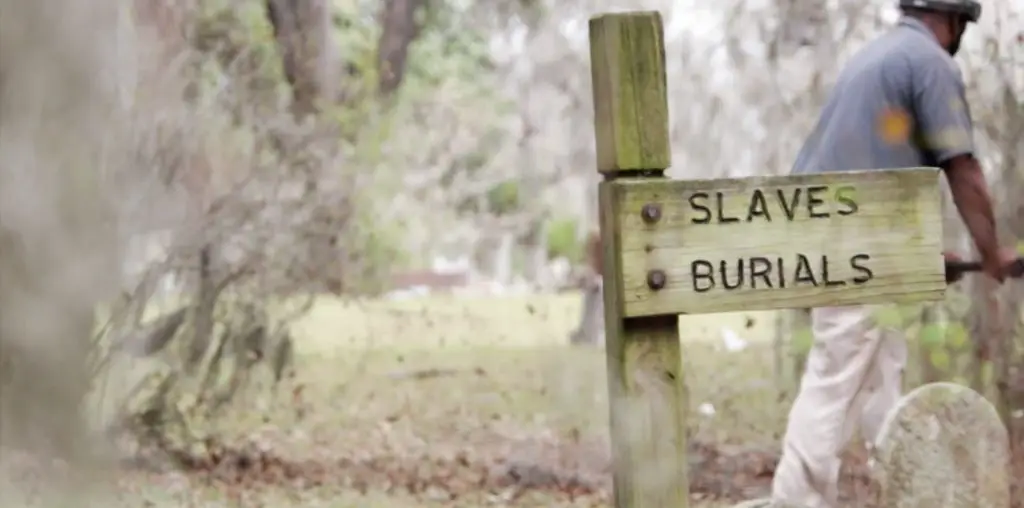
A couple of miles outside of Toronto, there are over forty school buses buried deep underground. The interconnected vehicles serve as the foundation for a sprawling atomic bomb shelter begun in 1979 by self-described “social inventor” Bruce Beach. The Ark Two was privately funded and completed in 1985. According to the man, it can withstand a blast whose epicenter is just a few miles away. Today, Ark Two is in a state of neglect, and an aging Beach lives with his wife on the edge of poverty and squalor.
Writer/director Paul Marc Kell’s The Dawnsayer focuses on Beach’s life, projects, castles in the sky, and many failures. The filmmaker makes it clear that Beach is no average doomsday prepper. He is obviously interested in surviving a possible doomsday, but, in addition, he gives a lot of thought to the next day, the dawn after doomsday. His lifelong focus, the centerpiece of his plan to reconstruct society post-doomsday, is a universal language that will allow all survivors to communicate.
The bunker and the universal language — as if those were not ambitious enough — were not the only projects undertaken by Beach. He designed the world’s first lightweight portable computer in 1974. The Beach’s Lightwriter, as he named it, was inexplicably ignored by IBM. He also convinced the Canadian government to fund his acquisition of a large research vessel. Beach recruited young college students and university researchers to be part of the research team as it sailed to Chile.

“…Beach is no average doomsday prepper…he gives a lot of thought to…the dawn after doomsday.”
The line separating iconoclast from conman is quite thin. The Dawnsayer does what any effective documentary should do by creating layers and imbuing its subject with ambiguity. Beach admits that he was not really interested in doing any research with the vessel. His outlandish plan was to use “research” as a smokescreen and go after buried underwater treasures. Whatever gold was discovered would then be used to fund his numerous projects. Some crew members were beginning to sniff out the scam when they saw the ridiculous uniforms Beach proposed for them to wear — think Star Trek crossed with a New Wave band. In short, the entire nautical scheme makes him appear less like a serious inventor and more like a Canadian L. Ron Hubbard.
Beach’s theories, worldview, and ideas come across as unconnected. We are not sure if this lack of cohesion stems from Beach having too many interests or his old age at the time of filming. Luckily, eccentricity works well in documentaries. Werner Herzog and Errol Morris have made careers out of it. However, if you are going to make an eccentric individual the subject of your film, you must make sure that they are captivating enough to keep audiences interested. As I watched The Dawnsayer, I kept asking, “is Bruce Beach’s eccentricity interesting enough to justify a documentary made about him?”
On balance, the answer is yes. When we learn about the death of his son, we discover that the bunker is perhaps a metaphor for buried pain. Perhaps, all of it — the bunker, the universal language, and the vessel — were not just mere projects but also forms of distraction from the most unimaginable doomsday, the bleak tragedy no one should have to suffer: the day a parent experiences the death of their child.

"…eccentricity works well in documentaries."


